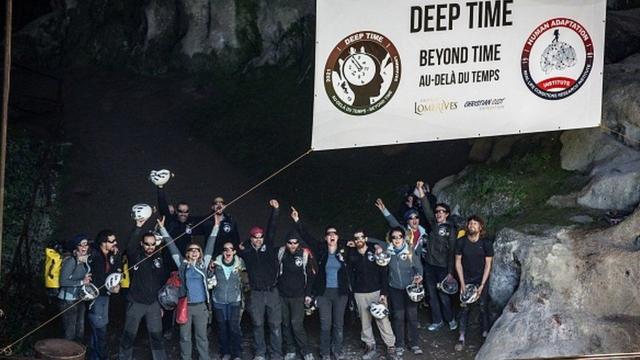You may recall that back in March fifteen people volunteered to be locked in a cave for over a month without daylight or any way to tell time. They did this to further understand ‘deep time’ and investigate how the human body reacts to the disorientation of not knowing the time of day.
After spending 40 days in the Lombrives cave in France, the 15 volunteers have now emerged from their isolation. So, how did they go?
[related_content first=”1683363″]
The Deep Time volunteers have returned
The eight men and seven women finished their time with the Deep Time experiment on April 24.
The volunteers emerged from the darkness to enthusiastic cheers and applause, wearing special sunglasses to help their eyes adjust to the first sunlight they’d seen in over a month.
Early reports from the volunteers seem to suggest time moved much slower in the cave.
One volunteer, Marina Lançon, said “it was like pressing pause,” and apparently wouldn’t have minded staying there a few days longer, The Guardian reported.
Project leader, Christian Clot, said for most of the group it felt like they’d only been in the cave for 30 days when it came time for them to leave. He also said he was “a little sad” to leave the cave.
The Human Adaptation Institute, which is leading the $1.9 million project, said the experiment would help them to understand how humans adapt to drastic changes in living conditions and environments.
“Our future as humans on this planet will evolve. We must learn to better understand how our brains are capable of finding new solutions, whatever the situation.” Clot said, after emerging from the cave.
What do you do in a cave for 40 days?
Living in the cave, the volunteers had no access to natural light, clocks, or communication to the outside world. They had no updates about the pandemic or what was going on with their friends or families.
So, how did the volunteers pass the time?
Team members had to rely on their biological clocks to know when to eat or sleep or complete their tasks. They had to provide their own electricity with pedal bikes and draw water from a well that was located deep underground.
Avez-vous déjà pédalé sur la lune ? ????✨
Pour produire une partie de l’énergie dédiée aux équipements et matériels scientifiques, l’équipe doit pédaler l’équivalent d’une douzaine d’heure par jour pour satisfaire à ses besoins.Merci à @RaphaelDomjan et @PlanetSolar#deeptime40 pic.twitter.com/m32L3SMwqw
— Christian Clot (@ChristianClot) April 14, 2021
One volunteer said he did 10km laps of the cave to stay fit and occupy himself.
This video is in French, but gives a bit of a taste of what it was like for participants during the Deep Time experiment.
According to Benoit Mauvieux, a chronobiologist involved in the research, two-thirds of the group said they wanted to spend a little longer underground to finish their group projects.
It’s unclear what these projects are that would make people so willing to stay in a cave. However, one of the main ventures that the team started was a 3D-map of the Lombrives cave system.
